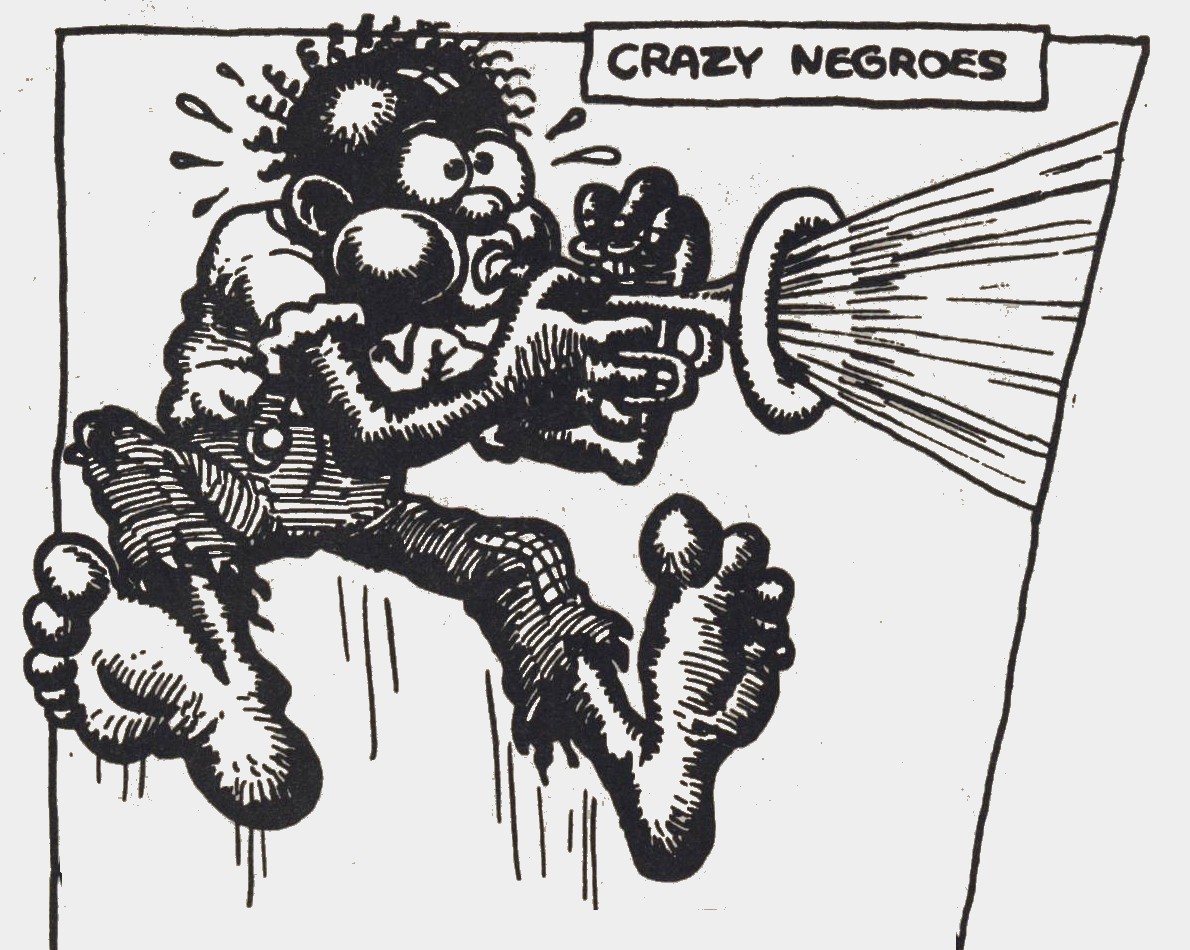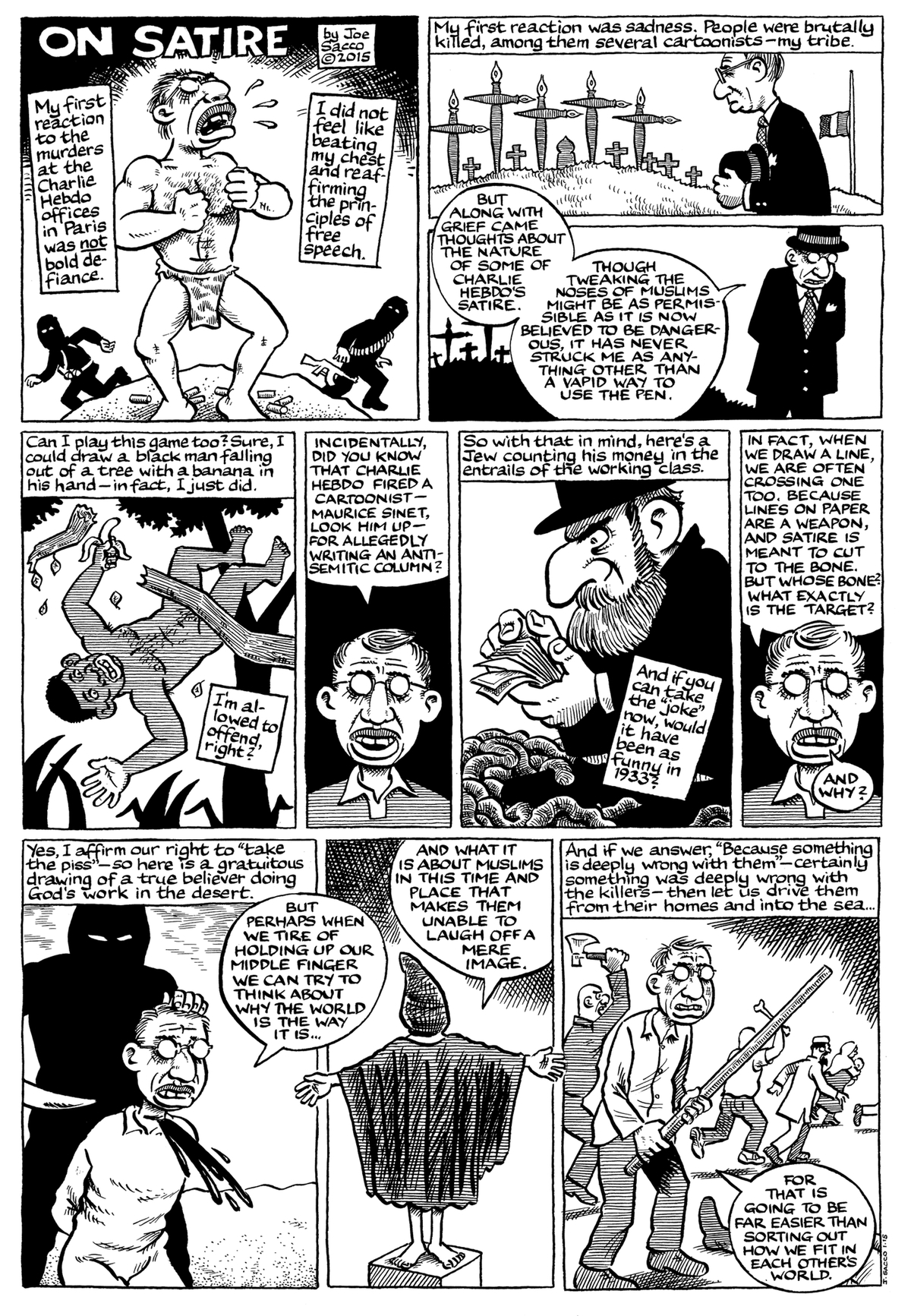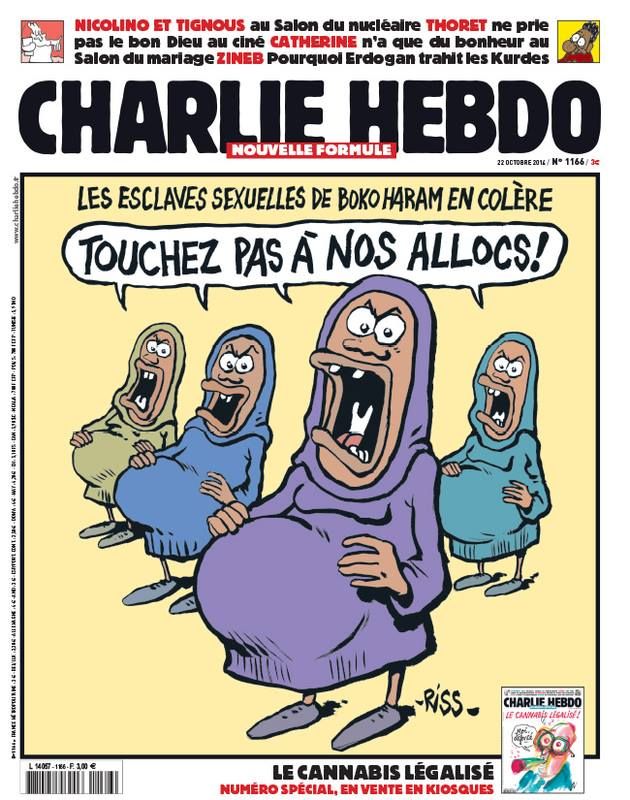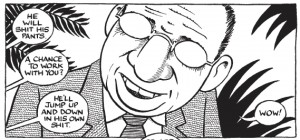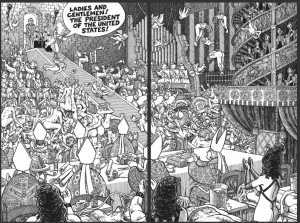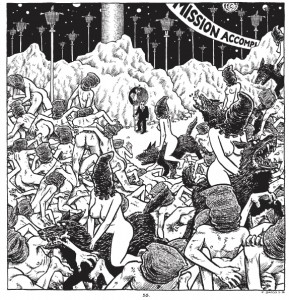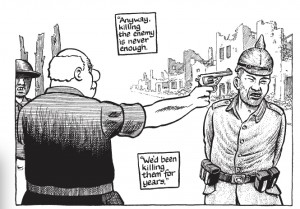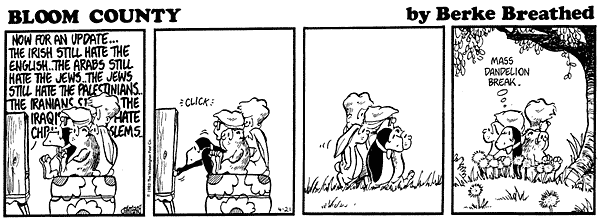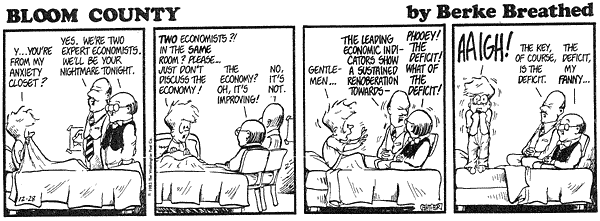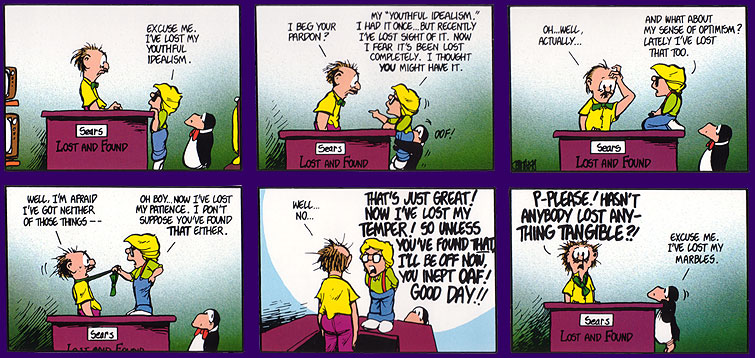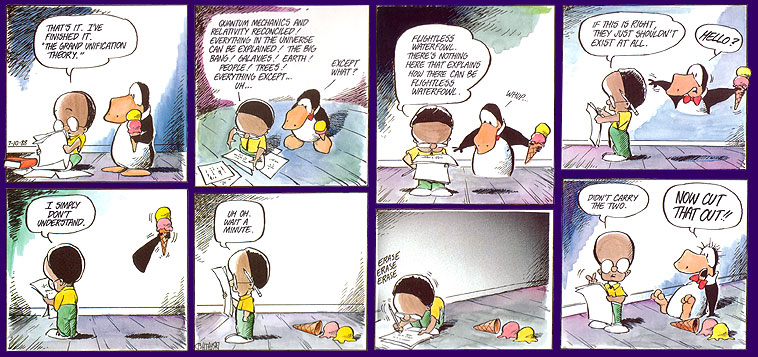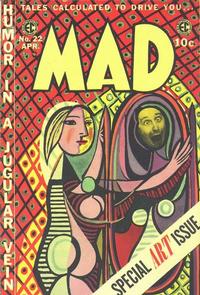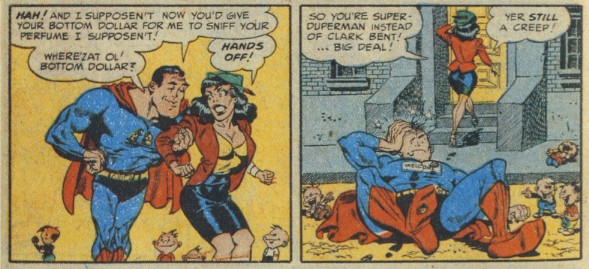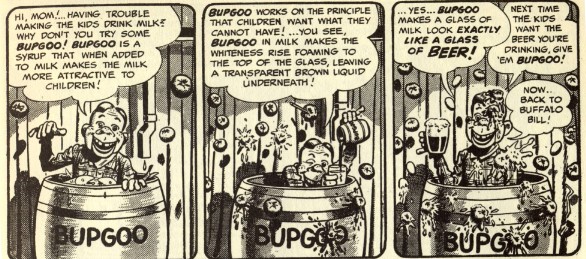Well, it’s been a long week. The hagiography has come and gone, the backlash has come and gone, balanced views have been proposed and interest is fading. What remains are protests in the Middle East against the caricature of the Prophet in Wednesday’s issue, and islamophobic violence in France (with one minor but heart-warming exception). One complicated answer that seems to remain, though, is “can an openly anti-racist magazine be racist at times, through carelessness and insensitivity ?” I am probably not in a position to say, but here is a look at one year of Charlie Hebdo covers.
52 pictures, then. From January 8th to december 31st 2014, Charlie Hebdo covered the news, with their now-(in)famous brand of vulgarity and cynicism. The hope is that, with a segment this size, we can investigate the techniques used to represent racial minorities, and especially the Muslim community. After all, they have been constantly under attack, haven’t they ?
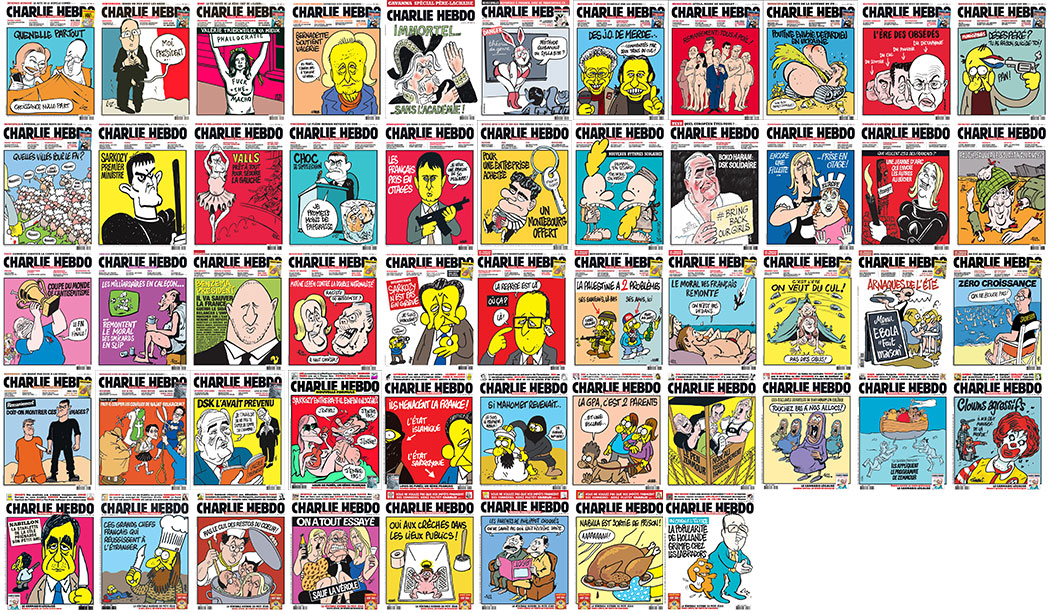
Well, not really. Out of these 52 covers, none is directly about Islam or the French Muslim community. In fact only one is about religion, it dates back to December and makes a joke about the far right trying to push Nativity Scenes in public buildings for Christmas. Eight, however, reference djihadism, but more on that later.
So what ARE the covers about, if they’re not about religion? Well top of the list, with eleven covers, is the Le Pen family, head of the far right party Front National. Clearly, they have been Charlie Hebdo’s most consistent targets over the years. The magazine has never stopped shedding light on their hypocrisy, racism and what they see as the self-hurting stupidity of their electorate (many of whom are very poor people who would suffer from the FN’s anti-welfare program). Second is president François Hollande who is also pictured eleven times, though often not as the main subject of the image. Then comes Prime Minister Manuel Valls and other members of his government, who total 8 covers. Former president Nicolas Sarkozy closes the top with seven covers. The rest are about current events, from plane crashes and ebola to Gerard Depardieu’s tax evasion and school reform. So what are we left with to assess the racism of Charlie Hebdo ? Mainly three groups: political figures who are not white, racial minorities among background characters, and the treatment of djihadism.
Political figures
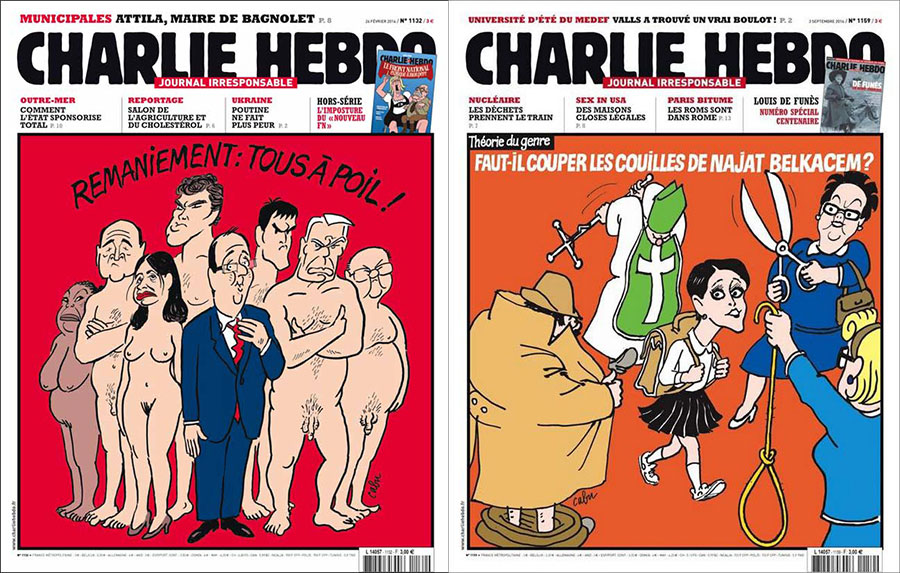
Left: Government reshuffle : they drop it all !
Right: Gender theory : should we cut Najat Belkacem’s balls ?
Only two non-white political figures appeared on the cover of Charlie Hebdo in 2014. Najat Belkacem and Christiane Taubira. Both are simple caricatures, without any racial stereotypes involved. But is the fact that only two non-white politicians are represented a sign of racism in itself? Since members of the government other than Prime Minister Valls only appear on three pictures, two is actually not that bad. And since their newsworthiness derives from being favorite targets of the right, their both being women and non-white says more about the French right than about Charlie Hebdo. Christiane Taubira, however, was the subject of a highly controversial cover back in 2013, so it’s probably worth looking into it.
Taubira, a radical leftist and former independentist from Guyana, is Hollande’s Justice Minister. As such, she was in charge, in 2013, of the bill that would open marriage rights to gay couples, which has made her the archenemy of the religious right. It doesn’t take long for the attacks to take on a racist “undertone”, culminating in a nauseating joke posted by a member of the Front National (FN) on her facebook page, showing two photos, one of a baby ape in a pink dress and one of Taubira, with the legend “At 18 months. Now.”
For years, Marine Le Pen, daughter of the infamous creator of the FN, has been working on her party’s image, superficially cutting ties with the most violent branches, and recentering her message on fighting the so-called islamification of France in the name of French secularism. At the heart of the rebranding is the use, on most of the communication, of the expression “Rassemblement Bleu Marine” (“Navy Blue Union” or “Navy Blue Gathering”), instead of the FN name.
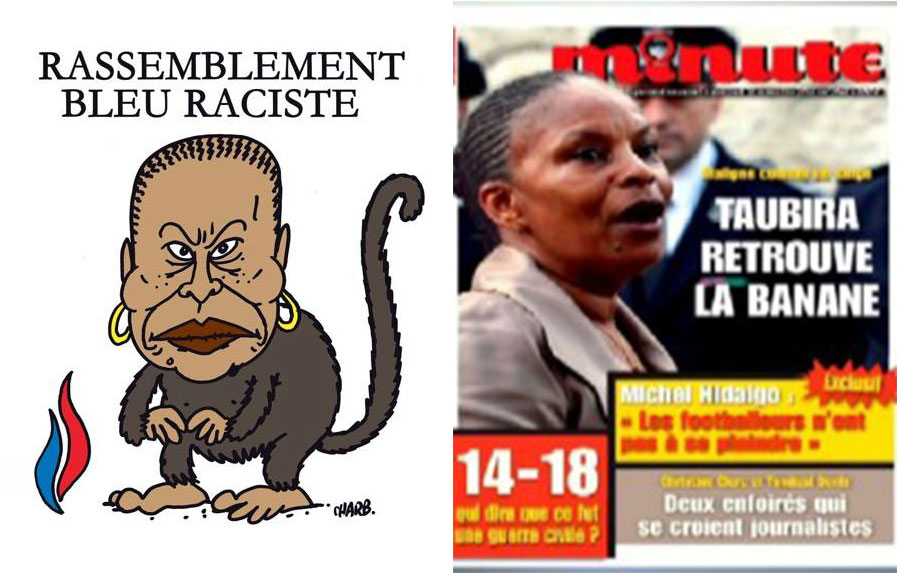
When the scandal of the monkey joke broke, Charlie Hebdo immediately used it to point out that, despite all its rebranding efforts, the National Front was still at heart a violently racist movement, as they’d never stopped saying. Above the image of Taubira as an ape, they renamed the super-party “Racist Blue Gathering”. On the left, the red-white-blue flame of the FN served as a reminder that the ties with the movement’s past were far from cut.
Was the racist representation of the minister still a mistake, though ? Some time later, the far right magazine Minute created its own cover on Taubira. “Clever as a monkey, Taubira gets her banana back.” (“having the banana” or however one can translate it, is a French expression that means “to look happy”). When Minute was brought to justice for racial insult, and cited the Charlie Hebdo cover as a precedent, Charlie chief editor (and author of the cover) Charb responded : “[the difference is that] by repeatedly associating Ms. Taubira’s name with the words “banana” and “monkey”, the far right hopes to pass a racist slogan, a colonialist insult off as a popular joke.” It’s been pointed out that in a way, Charlie Hebdo’s image participates in the “repeated association”, and Charb’s explanation of the problem might be a sort of admittance of this. After all, as Charlie cartoonist Luz explained in this interview, in order to be able to push the envelope, the Charlie Hebdo staff has always allowed itself to make mistakes. There are laws in France against racial insult and pushing racial hatred. Unlike right-wing pundits who constantly turn their trials into publicity stunts and themselves into victims of political correctness, Charlie Hebdo has always accepted trials for racism as justice doing its work of sorting out whether they had gone too far this time or not. Which they were found to have, in a very few, but existing, cases.
Background characters
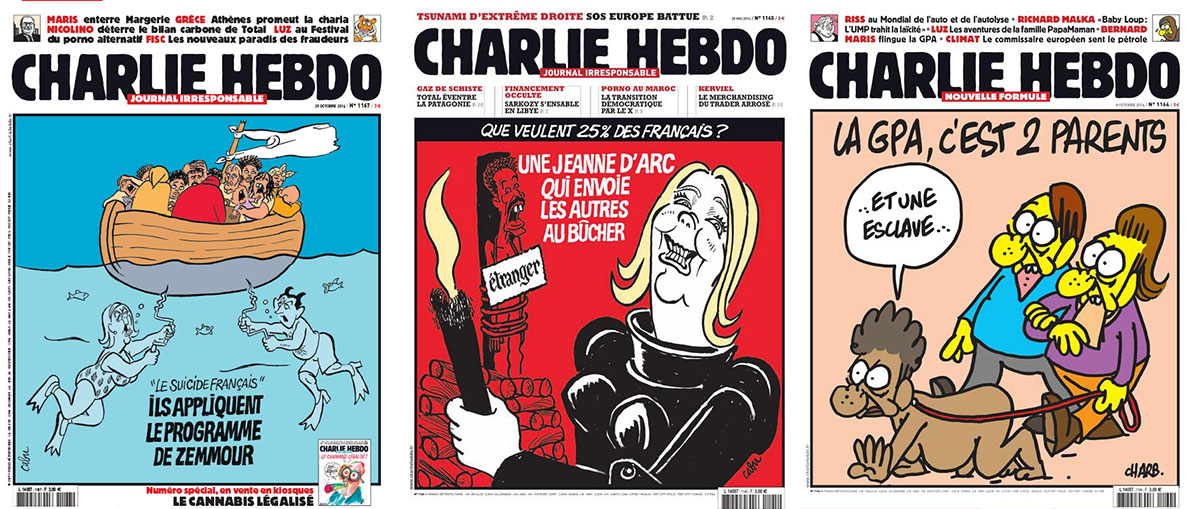
Left: French Suicide: they apply Zemmour’s book’s program
Middle:What do 25% of French voters want? A Joan of Ark who sends others to the fire
Right: Gestational surrogacy: it’s 2 parents. ‘And one slave…’”
Again, only three instances, but they do provide some controversial material. The most benign, by Cabu, shows Nicolas Sarkozy and Marine Le Pen drilling holes in a small boat full of refugees. The people on the boat represent various origins, with some cultural and racial shorthand, but the general tone is one of empathy for the refugees. In the second one, interestingly also by Cabu, the “foreigner” (as his sign says) is represented in a manner much more reminiscent of openly racist caricature. The contrast with the previous image illustrates how Cabu uses racist imagery specifically to illustrate the racist nature of Le Pen’s program. “What do 25% of voters want?”, the legend asks. “A Joan of Ark who sends others to the fire.” The final image, by chief editor Charb, is by far the most shocking. The text explains the image, but doesn’t make it any easier to watch : “Gestational surrogacy : It’s 2 parents, 1 slave”. The subject is clear : is people renting other people’s bodies an ethical hazard? Still, the shock value of the image is unrivaled in 2014, even by the “Boko Haram sex slaves” cover. The reason it is so shocking, however, even to the casual Charlie reader, is because there’s only one like it.
In one of his twitter essays, Jeet Heer defined the risk of using racist imagery as satire. “I think what is true of Crumb is also true of Charlie Hebdo: the anti-racist intent of shocking images blunted & reversed by repetition.” The thing is, contrary to the impression given by small selections of the most offensive cartoons, such shocking images as the “2 parents, 1 slave” are not repeated at all. There is just a handful of really offensive material in a given year, and it’s not the same subject each time. They may value their irresponsibility, but they also know how to manage shock value.
Djihad : the great big joke
Here we are, then. The section where attacking extremists means attacking Islam, which means attacking Muslims, which means bullying minorities. First, let’s get rid of the ones that only mention djihadism to make jokes about Prime Minister Valls. That’s two.
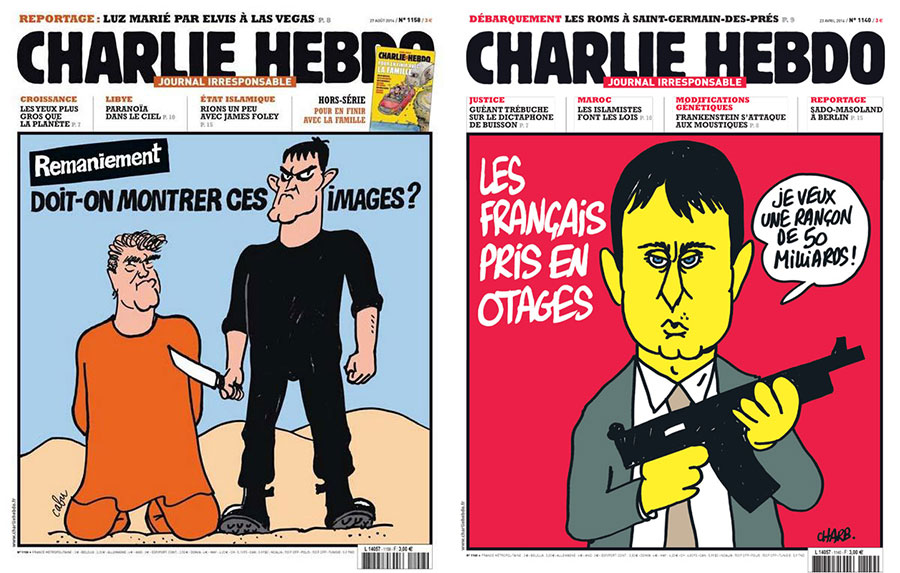
Left: Government reshuffle : Should we show these images?
Right:French hostages : ‘I want a €50bn ransom’
Dominique Strauss Kahn holding a #BringBackOurGirls sign with a lecherous look, or the return of Nicolas Sarkozy compared to the threat posed by ISIS are also only incidentally about djihadism.
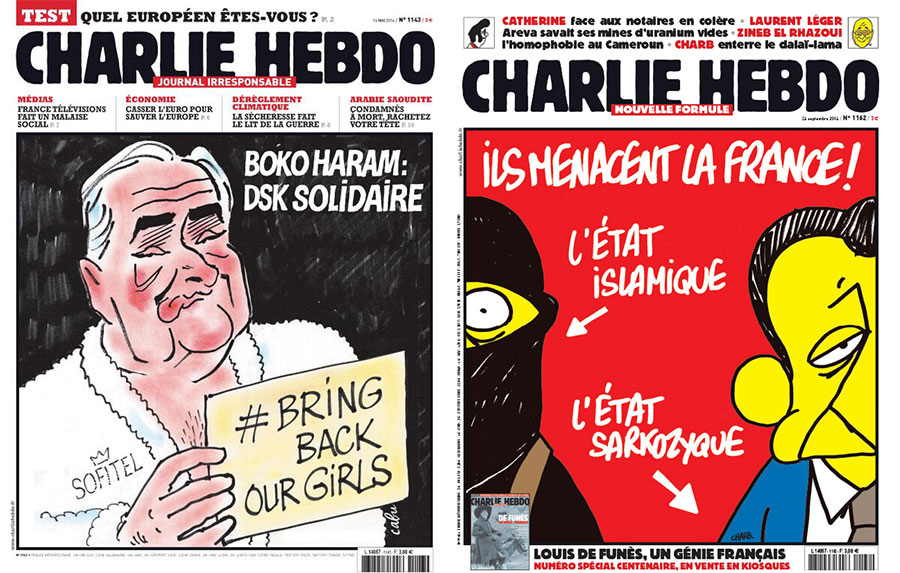
Left: Boko Haram : DSK expresses solidarity”
Right:The threat to France! Islamic State / Sarkozyk State”
A strange one is the Titeuf cover. School reforms have inspired to Luz a weird joke where the iconic haircut of the famous (in France) children’s comics character is used as an Islamist’s beard. It may reference child soldiers in war zones, or religion at school, but it’s most probably a purely visual, message-free joke. The second one also blends a favourite newspaper headline with terrorist imagery for a rather benign result.
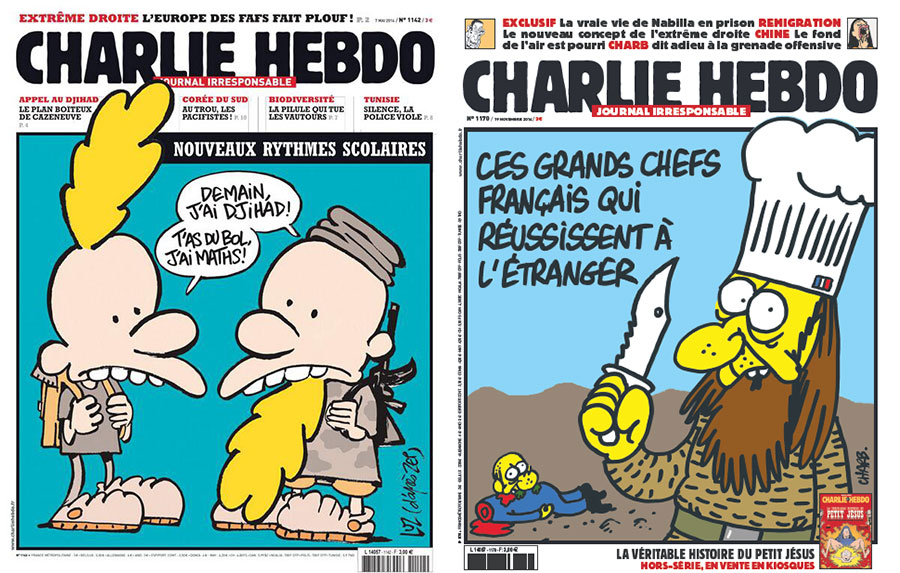
Left: School reform : ‘Tomorrow, I have Djihad!’ ‘You’re lucky, I have maths!’”
Right: Those French chefs who find fame abroad”
And finally, there are the two covers of 2014 that have been featured in selections of racist Charlie covers. The first one is fairly straight-forward, and is only offensive as it features Mohammad. The joke itself is about how the djihadists have deformed His message so much they wouldn’t even recognize him if he came back today. Which seems far from islamophobic.
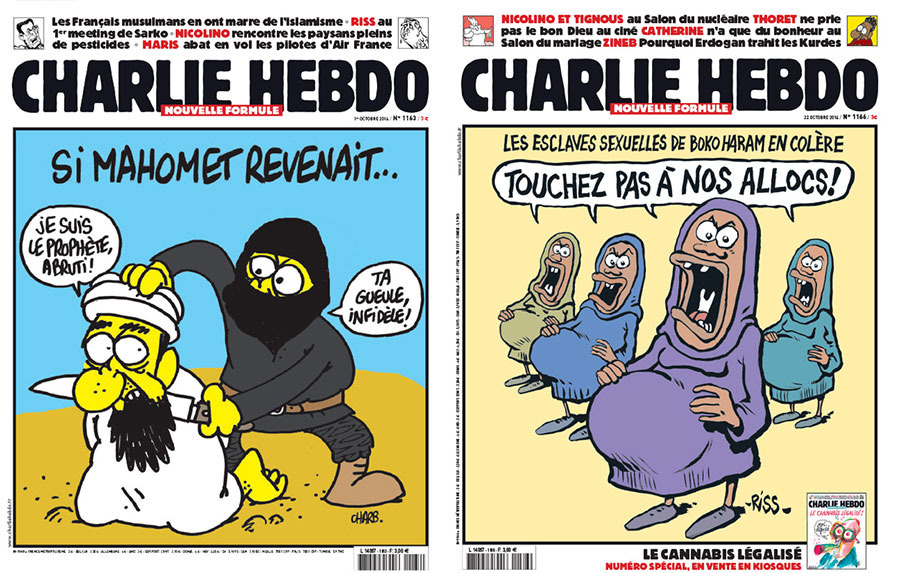
Left:If Mohammad came back: ‘I’m the Prophet, you moron!’ ‘Shut up, infidel!’
Right:Boko Haram’s sex slaves are angry: ‘don’t you touch our welfare!’
The second one is the hardest to explain to a foreign audience, because it features two specificities of the Charlie Hebdo humour that here blend awkwardly. The first is the conflagration of two pieces of news : the crimes of Boko Haram in Nigeria, and the attacks on the welfare system in France. The second one is the use of racist imagery in pictures that denounce racism (as seen above with Cabu’s Joan of Ark cover). The French right (and the European right in general) often point the finger at immigrants to explain why the welfare system costs too much. It’s an easy rhetoric because everybody agrees that we spend too much on welfare, but nobody wants cuts to the help they themselves receive, so blaming the usual suspects is a popular choice. Therefore, as Terry Drinkwater summarized on Quora : “Fairly straightforward, innit? The absurdity of raped and pregnant Boko Haram sex slaves acting out the welfare queen stereotype parodies the absurdity of the welfare queen stereotype.” What obviously didn’t help the cartoon to be understood as anything but racist is Riss’s rough and dirty style, which owes more to Reiser than to Cabu and Wollinsky. Little can be said about that, as it seems very much a matter of cultural taste. It does increase the insensitivity of the joke, though, admittedly.
Racism and Charlie Hebdo’s attacks on political Islam
A name that has been missing from most discussions is Zineb El Rhazoui. She certainly isn’t the only immigrant who has worked at Charlie Hebdo, from star cartoonist Riad Sattouf to their Kabyle copy editor Mustapha Ourrad, who was killed during the attack. She is however the magazine’s most virulent voice against political Islam. Looking again at the covers, here is a list of articles penned by El Rhazoui : “Tunisia, on the way to an atheist exodus”, “Morocco : the Islamists make the laws”, “Tunisia : quiet, the police is raping”, “Porn in Morocco : democratic transition through sex”, “When Muslims laugh at Islam”, “Mohammad, soon to be caricatured in Muslim countries?”…
Again, these are just a handful of articles among many that cover America, North Korea, Antisemitism in France, Islamophobia in Germany, etc. This list shouldn’t give the impression that Islam is the magazine’s favourite subject. As Luz, author of the “Charia Hebdo” and “All is forgiven” covers, explained a while back, “As atheists, it’s obvious that living in a traditionally catholic country, we’re going to attack Catholics more than Muslims, and the clergy more than God.” Similarly, Jul said : “It’s much easier to create violent cartoons about Christians, probably because we live in a Christian country. You can’t make fun of a minority religion the way you make fun of the majority one.”

Left: Private school : ‘If you’re nice to me… I’ll take you to the anti-gay protest!’
Right: God out of school : ‘So sick of parent-teacher meetings!’
As a leftist magazine, however, promoting the secularist fights for civil rights in the Muslim world is very much part of Charlie Hebdo’s mission. First, because they feel a connection to the minorities who fight theocratic tendencies in their countries. Unlike in the US, where civil rights were fought for by religious figures such as Martin Luther King and Malcolm X, in France they have always been fought for by secularists against the religious right. Just last year, the Catholic sphere organized an incredibly violent opposition to gay marriage, which inspired a flurry of Charlie Hebdo covers on Christianity and homosexuality (see the first image above). The second reason why secularists’ struggles in Muslim countries is an important subject is because it counters the “clash of civilization” narrative that the racist right is trying to impose in France. It is a way of showing that the real struggle does not oppose Christian and Muslim societies but rather civil liberties against theocratic instincts, in every society.
Zineb herself has explained as much in a long response to a Swiss newspaper which had accused Charlie Hebdo of racism back in 2011 (quoting articles she had written while not referencing her anywhere). What is racist, she proclaimed, is to consider that people in Muslim countries are somehow impervious to enlightenment. That holding Muslims to the same level of expectations as Western countries in terms of democracy is asking too much. Herself a civil rights activist who spent most of her life fighting the oligarchic and theocratic nature of the Moroccan monarchy, she certainly feels that the ostracized minority that fights for democratization in Arab and Middle-Eastern countries deserves more support than those who would try to have religion gain the same level of untouchability in France as it enjoys in more pious societies.
Zineb’s response is apparently only available in French, but Olivier Tonneau wrote a “Letter to my British Friends” that explains in length the French radical left’s position on Islam. Charb also wrote on the absurdity of giving religion too big a part in identifying members of French society: “I can’t stand people asking ‘moderate Muslims’ to express their disapproval of terrorism. There’s no such thing as ‘a moderate Muslim’, just citizens with a Muslim heritage, who fast during Ramadan like I celebrate Christmas. They do act: as citizens. They protest with us, vote against rightist idiots… It would be like asking me to respond ‘as a moderate catholic’ just because I was baptized. I’m not a moderate catholic. I’m not a catholic at all”. A statement in which a lot of religious people probably wouldn’t recognize themselves, but one that does explain a lot of Charlie Hebdo’s perceived insensitivity.
So… That’s it. Race – and religion – in Charlie Hebdo’s 2014 covers. It feels a little anti-climatic. Where are all the most offensive jokes? Naked Mohammad? The “Untouchables 2”? Well, they date back to 2013, 2012, and hide disseminated among hundreds of other pictures about DSK’s arrest in New York, Israel bombing Gaza and anti-semites reaping the benefits in France… More airplane crashes, more attacks on the Le Pens, a whole lot of penises and a whole lot of good and bad jokes. You can find them all here. And if you have a hard time finding the worst ones, well the truth is, they were also hard to find at the time. Because Charlie Hebdo, “a glorified zine” as Luz himself calls it, never had a large readership. And it’s perhaps the biggest misunderstanding about France and these cartoons : nobody ever gave a damn about them, unless they saw some political gain in having an opinion.

